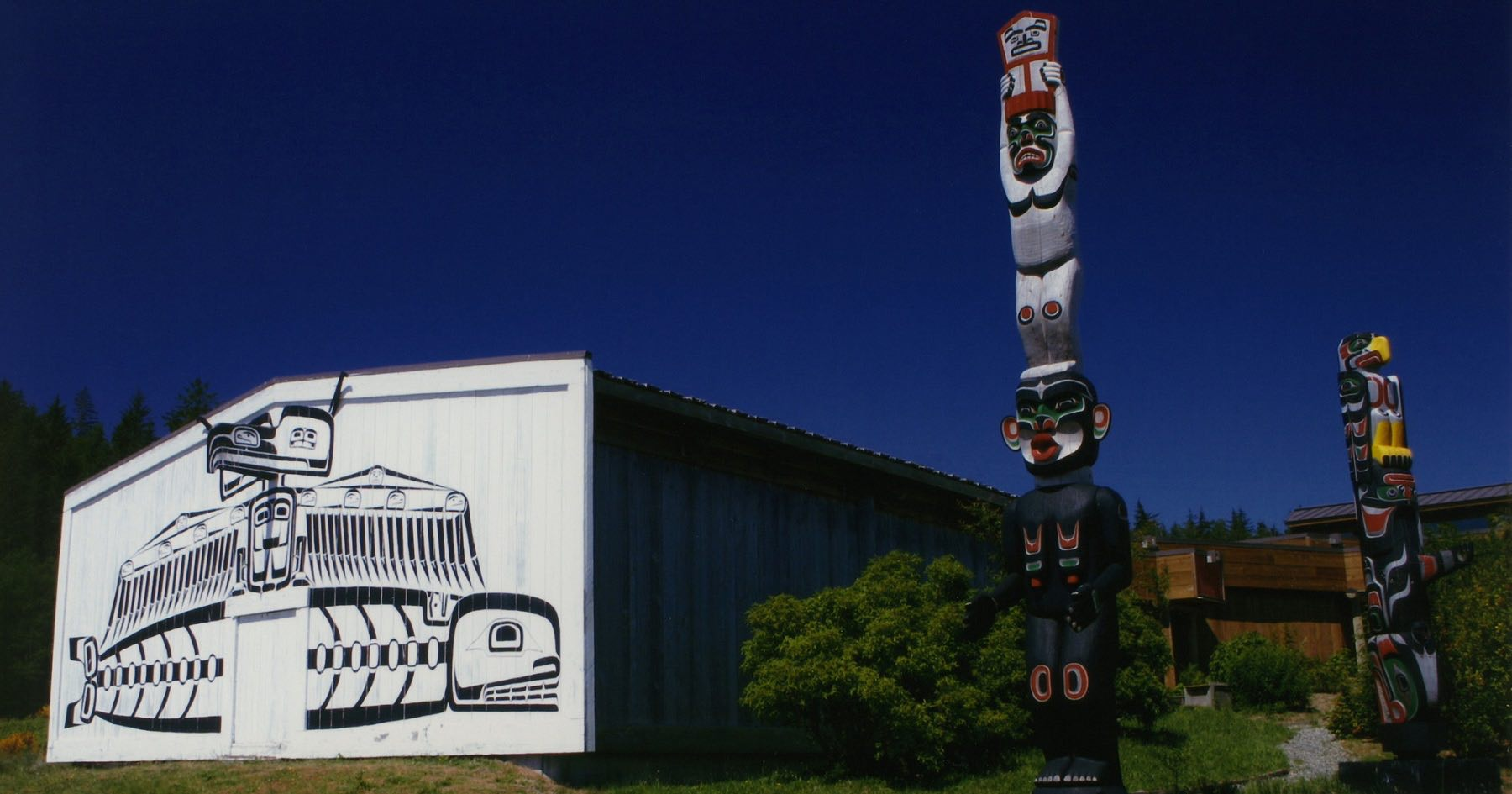During the second week of May, I will be travelling with Brendon Neilson, vision animator, and Elizabeth Northcott, archdeacon of the Mid-North Islands region, to ‘Yalis (‘Namgis Nation, Alert Bay, Cormorant Island) to engage in an intentional listening process with the people there as to how the Anglican church can best be present on ‘Yalis. I ask for your prayers.
The spirituality of the people of this island is rich and complicated. For generations, there was a rich religious and ritual life centered around potlaches. The feasts and ceremonies marked births, deaths, adoptions, weddings and other rites of passage. They featured masks, gift giving, ritual, song and dance. As Elder Agnes Axu Alfred explains, “Our Creator gave it to us, to be our way of doing things, to be our way of rejoicing, we who are [Kwakwaka‘wakw]. Everyone on earth is given something. The potlatch was given to us to be our way of expressing joy.” (Quoted from Living Tradition Virtual Exhibit, 2016.)
Potlatches were made illegal in 1885, and the prohibition was not lifted until 1951. Imagine for a moment what it would be like for Christians if it were illegal to celebrate the Eucharist for 66 years.
The Kwakwaka’wakw defied this immoral law and kept their religious and ritual life alive. They very vividly remember, however, how, in 1921, they were betrayed to the Indian agent. That day, 45 people were arrested and 21 people were jailed. Over 600 ceremonial objects were confiscated and the Indian agent, William Halliday, displayed these items across the pews at Christ Church, Alert Bay. This was incredibly painful for many reasons, not the least of which was that protocol required that ceremonial objects be kept out of sight when not in use. William Halliday charged admission to enter the church and see the items and many were bought by collectors or shipped off to museums.
“And my uncle took me to the Parish Hall, where the Chiefs were gathered. Odan picked up a rattle and spoke, ‘We have come to say goodbye to our life,’ then he began to sing his sacred song. All of the Chiefs, standing in a circle around their regalia were weeping, as if someone had died.” (James Charles King, at Alert Bay, 1977; quoted from Living Tradition Virtual Exhibit, 2016).
All of this was, of course, happening while the Anglican church administered St. Michael’s Residential School. While the school building was torn down in 2015, a stained-glass window in Christ Church still prominently features the school.
I am travelling to ‘Yalis because I have been called, in this day and age, to discern what a postcolonial way of being present on ‘Yalis might look like.
I have much to learn, but it seems to me that there are at least two major questions. First, how do we repent for and atone for our part in degrading and destroying the potlach? How can we be present as a life-giving Eucharistic community in a way that respectfully exists alongside and honours the potlach? As I understand it, both are ritual feasts of thanksgiving.
Second, how do we atone and repent for the intergenerational harm done by St. Michael’s Residential School?
When I visited ‘Yalis in May of last year, I spent time listening to survivors of that school and the overwhelming message I heard from them, apart from the pain of their own experience, was their distress for their grandchildren. They asked me to help them improve the lives of their children and grandchildren so that the next generations do not suffer.
I ask your prayers for our diocesan leaders, for the people of Christ Church, Alert Bay, and for the ‘Namgis First Nation. May God grant us the wisdom we need to find a new, postcolonial way of loving God and neighbour.
Additional References
The Potlatch Ban – The Bill Reid Centre – Simon Fraser University (sfu.ca)




